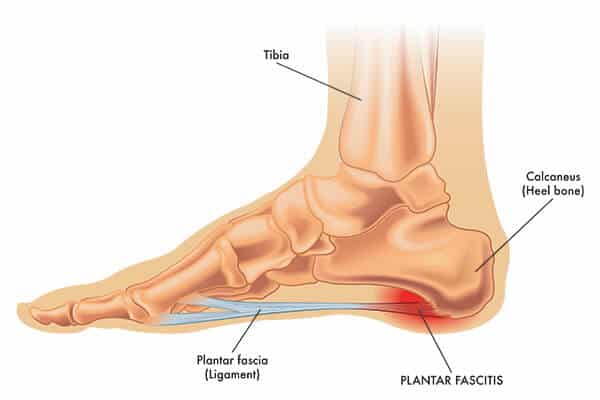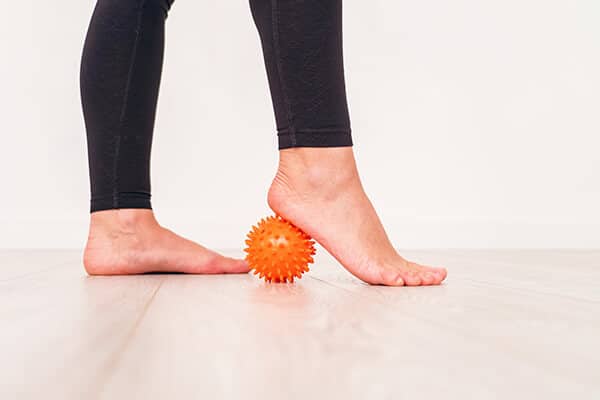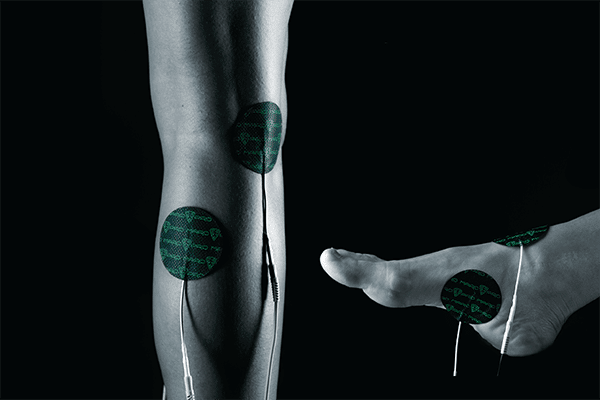Plantar Fasciitis | The New Guide to Prevention & Recovery

Here’s some good news if you have plantar fasciitis: resolving the issue isn’t too difficult and for most people medical intervention isn’t required. Even better, preventing plantar fasciitis is simple, not to mention much more preferable than dealing with another day of stabbing pain.
According to the Mayo Clinic, plantar fasciitis is a very common condition that’s usually self-treatable and self-diagnosable. So, don’t just sit around and hope it gets better, learn some strategies for faster recovery and effective prevention.
What is Plantar Fasciitis?
Plantar fasciitis is very common for runners, although it can also be caused by excessive walking or standing. The main symptom people experience is stabbing pain along the bottom of the foot, typically near the heel. For most people, the worst pain is felt while taking their first few steps after waking up. But, it can also worsen after standing for a long period of time or while walking after sitting for a long period of time.
The plantar fascia is the band of tissue that connects your toes to your heel bone. It has a bowstring shape and supports the arch of your foot. When repeated stress is placed on the ligament, micro tears form, making the area irritated and inflamed. Besides excessive running or walking, poor foot cushioning can also be factor in the onset of plantar fasciitis.

How to Recover
Many of the recommendations out there are based on outdated principals. For example, there is no evidence that ice improves the recovery process. Studies show that ice delays healing and can even make the situation worse. NSAIDs, like ibuprofen, are often recommended for pain. At times, they can be necessary, but what’s not commonly mentioned is that taking NSAIDs negatively affects your recovery. Here are some strategies that can actually help you recover and relieve pain:
1. Active Recovery
Since your body’s natural recovery process relies on muscle activation, it’s no surprise that active recovery is becoming the go-to recovery method. Don’t just sit there if plantar fasciitis sets in, keep things loose and active.
2. Massage Ball

Using a massage or lacrosse ball can help break up adhesions that may have formed in the bottom of your foot. Adhesions form when muscles tear and the body repairs the break with scar tissue. Their dense nature can compress the surrounding muscle and cause pain in many cases.
3. Heat Pad
Grab a head pad or make your own using a sock and rice. Applying heat to plantar fasciitis can provide soothing relief. Heat also helps open blood vessels, which will help bring blood flow and necessary healing supplies to the damaged area.
How to Prevent Plantar Fasciitis
The best thing you can do is make sure you never give plantar fasciitis a chance. Start using these prevention methods that are proven to work.

1. Stretch
Gently stretching your plantar fascia can help increase flexibility in your foot, maintain function, and keep things loose. When it comes to injury prevention, all these components are very important. Runner’s World recommends the following stretch to target your plantar fascia.
“Sit down, and place the foot with heel pain across your knee. Using your hand on the side affected by plantar fasciitis, pull your toes back toward your shin until you feel a stretch in your arch. Run your thumb along your foot—you should feel tension. Hold for 10 seconds. Repeat.”
2. Active Recovery
Overuse is one of the major causes of plantar fasciitis. Taking the proper steps towards recovery in between workouts is essential for prevention. Active recovery is a tried and true method that facilitates each stage of your body’s natural recovery process. By engaging in low-stress activity, such as a light swim or cycle, your body kickstarts and speeds recovery. Harvard Health recommends doing toe curls and ankle circles as an active recovery strategy. Just be sure not to do too much and cause additional damage or pain.

Another option is to perform active recovery with Marc Pro, which makes it easy to target specific areas like your lower legs, quads or back. Marc Pro creates non-fatiguing muscle contractions, which deliver all the benefits of active recovery to your problem areas. With it’s non-fatiguing nature, you can use the device for as long as you need to ensure a full recovery. Plus, no additional time commitment is required since you can use it while working, relaxing, or traveling. When it comes to effective and fast recovery, active recovery is key. (Note: while Marc Pro is a highly effective recovery tool, it is not to be used on medical conditions, so use only for prevention measures.)
3. Better Footwear
Another contributor to plantar fasciitis is poor foot support. In addition to other preventative measures, using proper footwear is necessary in some cases. Shoes should have adequate cushioning to help prevent the impact that’s placed on your plantar fascia while running or walking.
Plantar fasciitis does not have to keep you from doing the activities you love. If you’re more susceptible to plantar fasciitis, make sure you take the necessary preventative precautions to stay injury free. Don’t be reactive, be proactive about your health.
You may also be interested in: